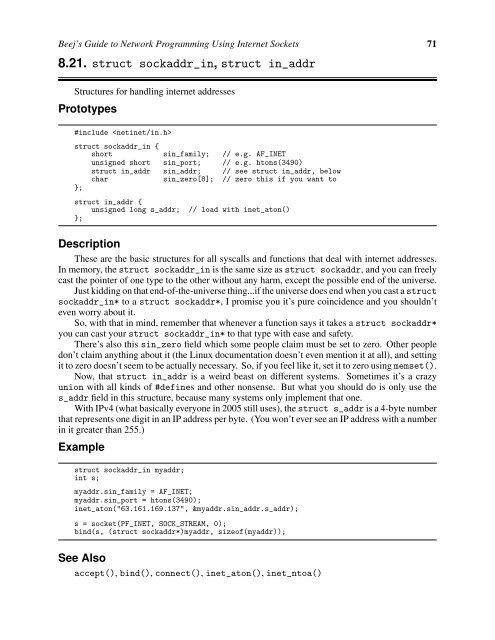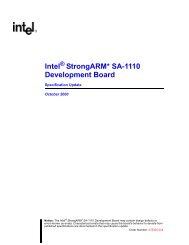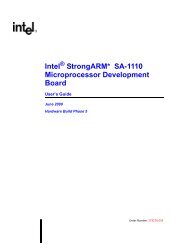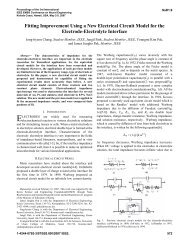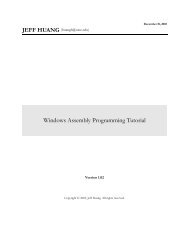Beej's Guide to Network Programming Using Internet Sockets
Beej's Guide to Network Programming Using Internet Sockets
Beej's Guide to Network Programming Using Internet Sockets
- No tags were found...
You also want an ePaper? Increase the reach of your titles
YUMPU automatically turns print PDFs into web optimized ePapers that Google loves.
Beej’s <strong>Guide</strong> <strong>to</strong> <strong>Network</strong> <strong>Programming</strong> <strong>Using</strong> <strong>Internet</strong> <strong>Sockets</strong> 718.21. struct sockaddr_in, struct in_addrStructures for handling internet addressesPro<strong>to</strong>types#include struct sockaddr_in {short sin_family; // e.g. AF_INETunsigned short sin_port; // e.g. h<strong>to</strong>ns(3490)struct in_addrcharsin_addr;sin_zero[8];// see struct in_addr, below// zero this if you want <strong>to</strong>};struct in_addr {unsigned long s_addr;};Description// load with inet_a<strong>to</strong>n()These are the basic structures for all syscalls and functions that deal with internet addresses.In memory, the struct sockaddr_in is the same size as struct sockaddr, and you can freelycast the pointer of one type <strong>to</strong> the other without any harm, except the possible end of the universe.Just kidding on that end-of-the-universe thing...if the universe does end when you cast a structsockaddr_in* <strong>to</strong> a struct sockaddr*, I promise you it’s pure coincidence and you shouldn’teven worry about it.So, with that in mind, remember that whenever a function says it takes a struct sockaddr*you can cast your struct sockaddr_in* <strong>to</strong> that type with ease and safety.There’s also this sin_zero field which some people claim must be set <strong>to</strong> zero. Other peopledon’t claim anything about it (the Linux documentation doesn’t even mention it at all), and settingit <strong>to</strong> zero doesn’t seem <strong>to</strong> be actually necessary. So, if you feel like it, set it <strong>to</strong> zero using memset().Now, that struct in_addr is a weird beast on different systems. Sometimes it’s a crazyunion with all kinds of #defines and other nonsense. But what you should do is only use thes_addr field in this structure, because many systems only implement that one.With IPv4 (what basically everyone in 2005 still uses), the struct s_addr is a 4-byte numberthat represents one digit in an IP address per byte. (You won’t ever see an IP address with a numberin it greater than 255.)Examplestruct sockaddr_in myaddr;int s;myaddr.sin_family = AF_INET;myaddr.sin_port = h<strong>to</strong>ns(3490);inet_a<strong>to</strong>n("63.161.169.137", &myaddr.sin_addr.s_addr);s = socket(PF_INET, SOCK_STREAM, 0);bind(s, (struct sockaddr*)myaddr, sizeof(myaddr));See Alsoaccept(), bind(), connect(), inet_a<strong>to</strong>n(), inet_n<strong>to</strong>a()


